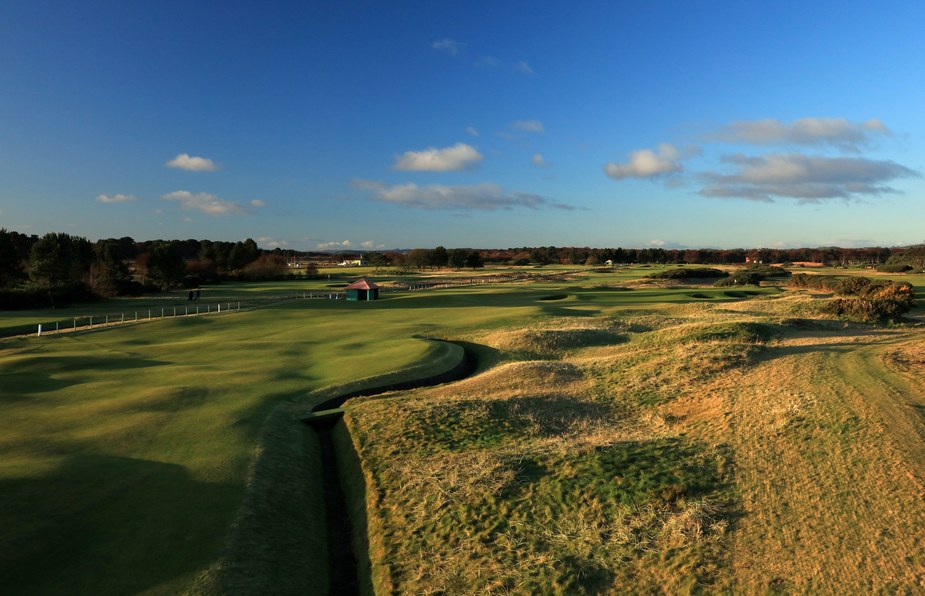Bleak. Barren. Desolate. All are adjectives that have many times been applied to the stark and often windswept links of Carnoustie. In mid-summer, that is. And mostly when the British Open has come calling – seven times now – at the small and unpretentious Angus town hard by the north shore of the Firth of Tay. In early February, such ominously foreboding descriptions are perhaps even more applicable, especially on a dank, grey day for which the Scottish word “dreich” was invented.
But only if scenery is your sole guide. For golfers who know what they are looking at, Carnoustie has always and clearly represented nothing other than the very best of links golf. Well, with one exception. But let’s not go too deeply into the misguidedly rough-covered nonsense that was the 1999 Open. The one scarred by Jean Van de Velde and won by Paul Lawrie.
Besides, that massive loss of perspective won’t be happening again. Not this year anyway. And not if Craig Boath has anything to do with it. Which, happily, Carnoustie’s head greenkeeper very much does.
“We think about the Open all the time,” says Boath, who was a 19-year-old apprentice during the ’99 Open and deputy head in 2007, the last time The Open visited Carnoustie. “It’s always on-going. And, while we do have other events here, we are conscious of having the whole world watching when The Open comes. To that end, we are always trying to keep the course as firm as possible. We don’t want the course to be soft, even after heavy rain.
“We are looking for greens running about 10 to 10½ on the Stimpmeter. We have to be careful with that. If it gets too windy, the fifth green can be a problem with the pin up top. So can the third green and the sixth. The grandstands can have an impact too. They deflect the wind into different places sometimes. So 10 feet is safe.”

More specifically, Boath and the 31 members of staff who work on Carnoustie’s three courses (the Burnside and Buddon are the others) have been busy revetting the faces on more than 80 of the 111 bunkers that dot the fearsome test that will host the world’s oldest – and most important at least to the folks in these parts – championship for the eighth time this July. As is typically the case in links golf, just about all of them will represent a full one-shot penalty, the high lips condemning the wayward to no more than a wedge back into play.
While the course itself will measure the same as it did in 2007 – a maximum of 6,786 metres (7,421 yards) – there will be some subtle changes to the landscape. In an effort to minimise the presence of too many grandstands, Boath and his men have created a number of spectator mounds.
The most prominent of these, according to Boath, are around the eighth and 12th greens, but there are others around the fifth tee, right of the eighth fairway, right of the ninth fairway. And it all looks quite natural. Suffice say, when you add in the traditional big bleachers around the 18th green, there will be no shortage of places to sit and watch.
When it comes to the exact positioning of tees and pins, Boath yields to the wisdom of the R&A, who run The Open. But he is rightly proud of the fact that, 11 years on from Padraig Harrington’s playoff victory over Sergio Garcia, Carnoustie is one of the few courses on the planet equipped to resist any temptation to build new back tees. Despite the fact that Tommy Fleetwood nipped round in a new low of 63 during last October’s Dunhill Links Championship – a time of year when the course is softer and more susceptible to scoring – Carnoustie is well able to withstand the technological advances of the past decade or so.

“We have actually widened some of the fairways,” Boath says. “The 11th, for example, is wider on the right side near the green. But everything else is pretty much the same as 2007. No hole is narrower than it was then. I take some pride in the fact that this course doesn’t really need to be lengthened or strengthened. If it plays fast and firm, it will be a great test, one that will allow the players to decide how they play each hole. I want them thinking, rather than just standing there smashing drivers and hitting wedges onto the greens.”
And the rough that so dominated conversation back in ’99?
“It was clear afterwards that nobody had liked the way the course was back then,” Boath says. “There were a lot of negative comments. If we could do it all again, I think we might have graded the rough a bit more. It went from fairway to jungle pretty quickly.
“We work on that a lot actually. Over the past few years we have put a lot of effort into getting rid of the poorer grasses like Rye and Yorkshire Fog in the rough. We want to encourage finer grasses like fescue, ones that don’t get so juicy. I want players to have a chance to recover when they miss a fairway, but only if they hit a really good shot. I don’t want that shot to be too easy, but not so hard that it is impossible to do anything other than hack-out.”
Sounds promising already. Roll on July.

